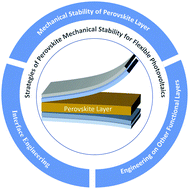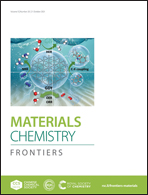Strategies of perovskite mechanical stability for flexible photovoltaics
Abstract
The market's increasing demand for portable electronic products has made the research in flexible devices very attractive. Flexible solar cells are one of the most eye-catching devices in the field of flexible photovoltaic devices. And the perovskite material has become a powerful candidate material for manufacturing flexible solar cells due to its excellent optical properties, low price and the ability to tolerate more stress accumulation. However, as an active layer, the perovskite film still faces the issue that cracks are easily generated when bending and encountering temperature changes for the limited flexibility. There are many factors that affect the mechanical stability of the perovskite layer: the characteristics of the material itself, the influence of the other layers in the device and the presence or absence of a protective layer. This work reviews some reported strategies of improving the perovskite bending durability, classifies them according to the influencing factors mentioned above, and describes them in detail respectively.

- This article is part of the themed collection: 2021 Materials Chemistry Frontiers Review-type Articles


 Please wait while we load your content...
Please wait while we load your content...